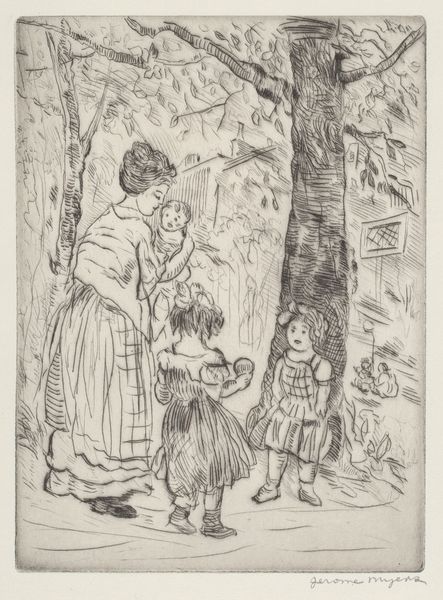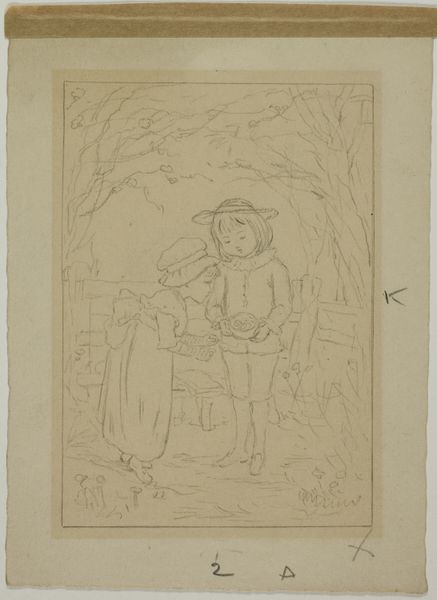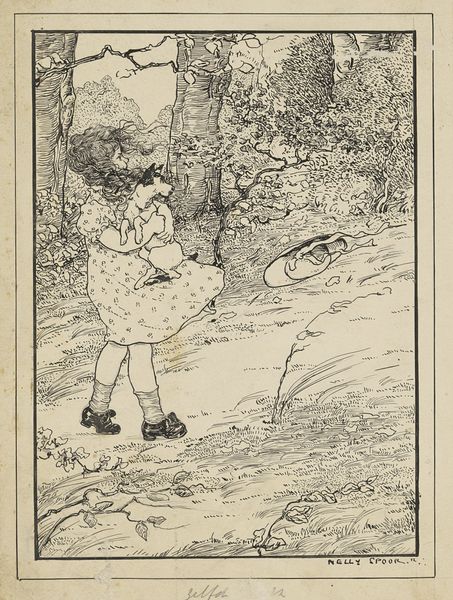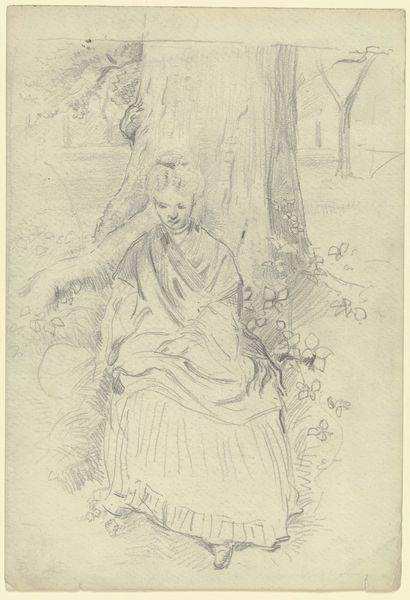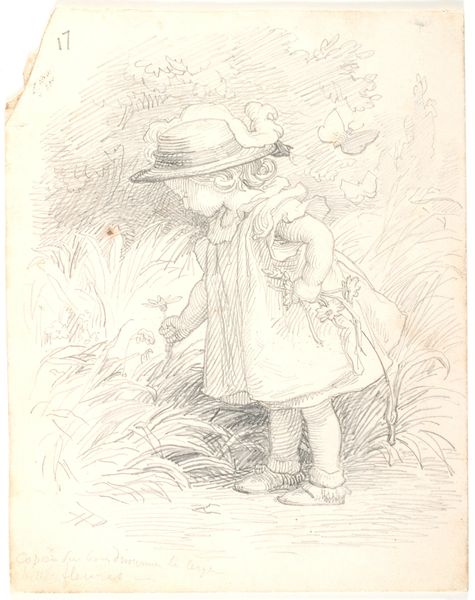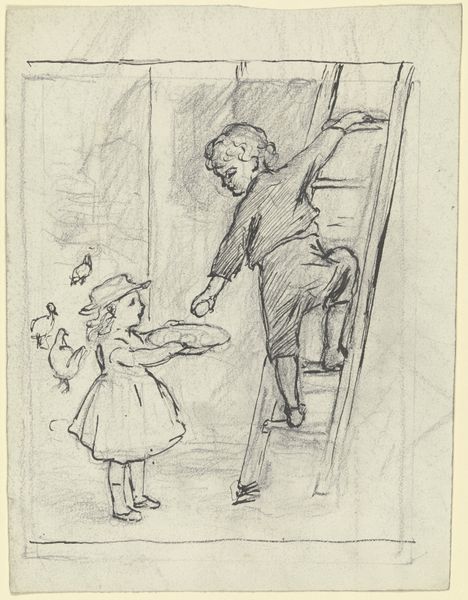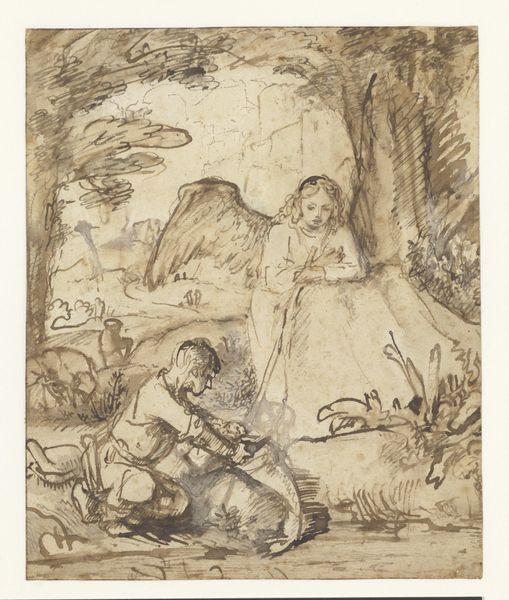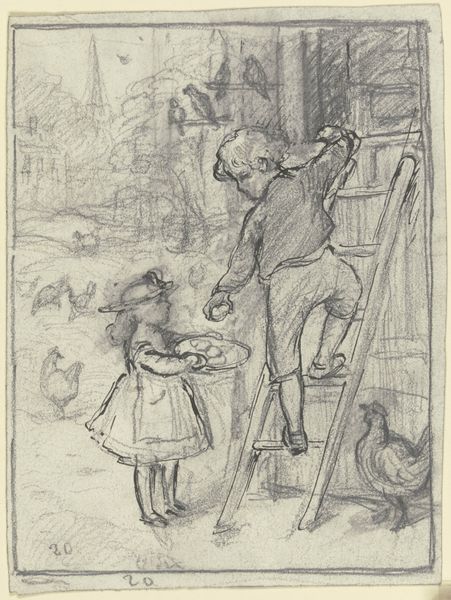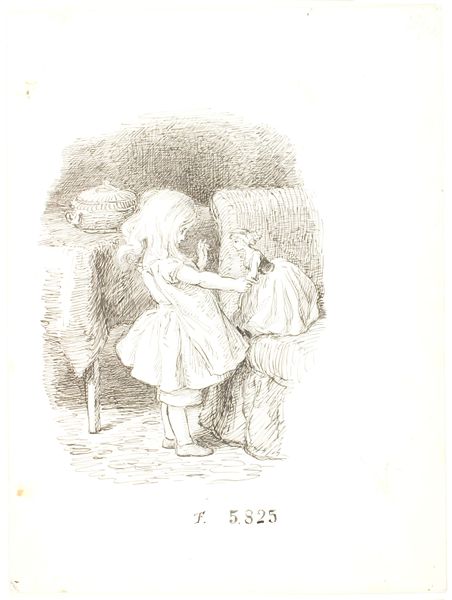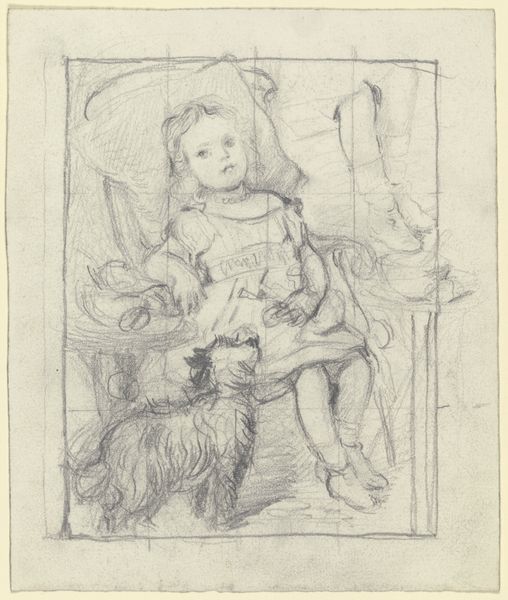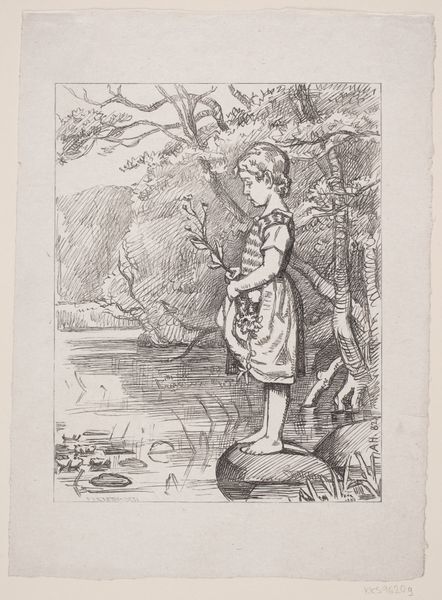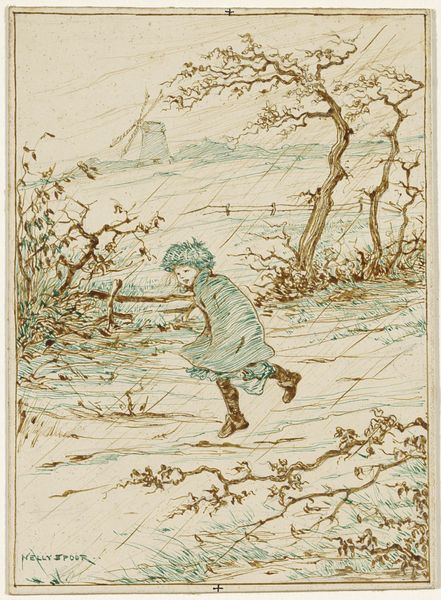
Copyright: Public Domain
Editor: We're looking at Otto Scholderer's "Two Children by a Bush," created in 1871, using pencil, ink, and gouache on paper. It’s quite delicate, almost dreamlike in its hazy quality. What catches your eye in this piece? Curator: It’s interesting to consider the genre painting aspects alongside the clear influence of Romanticism in this work. What do you make of the relationship between childhood, nature, and representation that's being constructed here? Think about what it might signify in the historical context of the late 19th century, especially considering societal views on childhood innocence and burgeoning industrialisation pulling people away from rural environments. Editor: I see how their innocence seems to be intertwined with nature, but isn't there something a bit unsettling in the scene, as if the children were being placed there? Is this intentional, maybe a critique of idyllic scenes? Curator: Precisely! The very act of staging, the composition itself, highlights the constructed nature of this "innocence." How do these compositional choices relate to the viewer's gaze and its relation to the power dynamics? Considering that Scholderer was part of a circle addressing social issues, might this drawing be engaging with tensions between idealised pastoral visions and emerging urban realities? Editor: So, the seemingly simple scene holds deeper layers related to contemporary issues and perceptions. I now understand how the technique and staging, and how children relate to these topics. Curator: Exactly. By critically examining seemingly quaint artworks such as this, we can unearth vital commentary on the socio-political landscapes they emerged from.
Comments
No comments
Be the first to comment and join the conversation on the ultimate creative platform.
